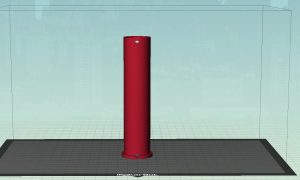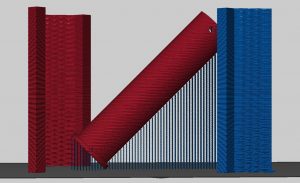When you are slicing your 3D model for printing, the first focus is often on how to most easily get the print to stick to the platform. This is very important to consider but generally it is possible to get a model to properly stick in almost any orientation. As such it can be very beneficial to plan your orientation of the print in such a way to maximize the strength.
Generally the Z axis of a print is considered the weakest. This is because on the Z axis there is the possibility of separation between layers, while the X and Y axis are composed of much more continuous beads of filament. This means if everything else is equal, the print is most likely to fail between each of the layers on the Z axis. The degree of the difference in strength between the different axes will depend on the printer and the material as some have better layer adhesion than others.
When printing an object such as this spool holder we have designed, orientation will play a big role in the strength of the finished object. As this part is a shaft for a spool to hang on, it will be being stressed mostly between the layers with the orientation as shown below.
We how this item is going to be used and it is clear that most of the stress will all be in one axis. As such we can simply choose another orientation that will move the weaker Z axis layers to not align with our direction of stress. Below you can see a better layout for overall strength of the object that was achieved by printing it on a 45 degree angle.
This orientation is going to result in a much stronger part for our application. The only downside to choosing the strongest orientation is that it may require additional material and/or time to print.
Most of the parts you print may not need to have their orientation optimized in order to achieve the result you are after. If you do happen to be trying to make a print work that is pushing the limits of your printing material, this is a great way to gain that little bit of extra strength. Many times the ideal positioning is around a 45 Degree angle as it can serve to distribute the weakness between two axes in your object and reduce the overall chance of failure during use.

